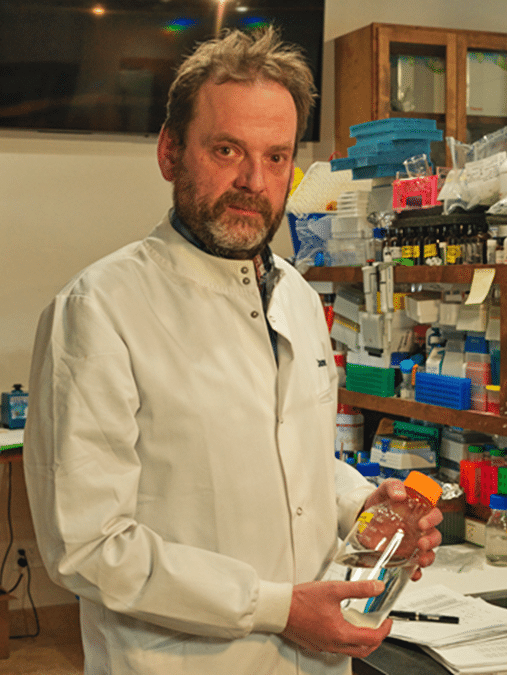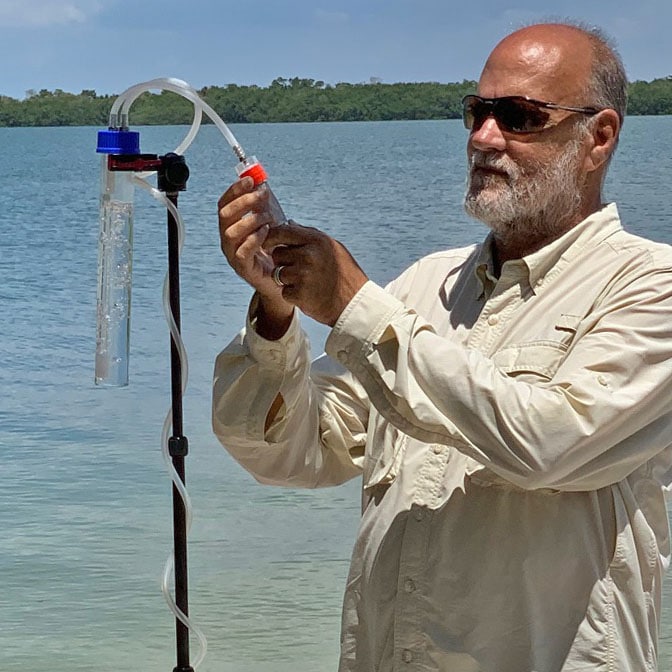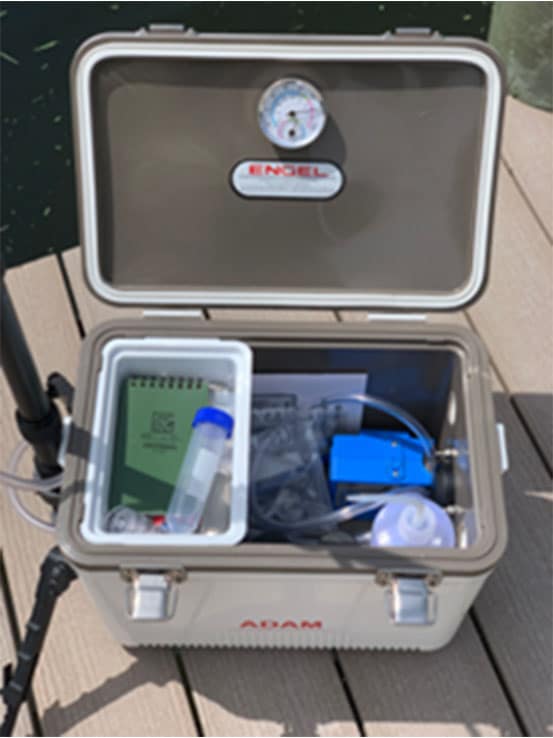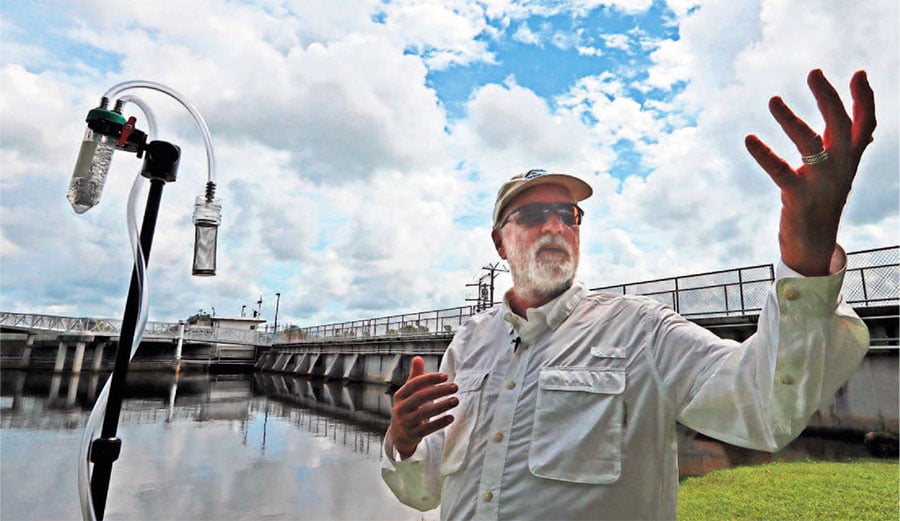Calusa Waterkeeper and Wyoming-based Brain Chemistry Labs collaborate on ground breaking device to research airborne toxins from harmful algal blooms
Using the most sensitive technology available for detecting harmful algal bloom (HAB) toxins, the Calusa Waterkeeper (CWK) research team started airborne toxin monitoring in July 2021 at eight locations in Lee County, Florida. Samples were collected with the use of a monitoring device designed and optimized from the ground up, incorporating elements of other design components from the published record and suggestions from leading toxin researchers Dr. James Haney at University of New Hampshire and Dr. Michael Parsons at Florida Gulf Coast University. The team made up of PhD scientists and engineers constructed an aerosol sampling device labeled Airborne Detection for Algae Monitoring (ADAM), in the process to be patented.

Dr. James Metcalf processing cyanobacterial samples at the Brain Chemistry Labs
Aerosol and associated on-site water samples were analyzed for eight different HAB toxins resulting in 945 separate air or water analyses by the not-for-profit Brain Chemistry Labs (BCL) scientists Dr. James Metcalf, Dr. Sandra Banack and Dr. Paul Alan Cox at their Jackson Hole, Wyoming laboratories. The internationally acclaimed team at BCL is no stranger to HABs, having published many peer-reviewed research papers relating to harmful algal blooms and their toxins, including published research on the 2016 and 2018 HABs in south Florida. Note the link below to BCL and other published research.
Results from the initial July to November sampling period showed detection of toxins in both water and airborne samples. While most samples resulted in no detection for the eight toxins monitored, two airborne toxins, anatoxin-a, was detected at Matlacha and brevetoxin at North Fort Myers. Furthermore, two toxins, DAB and AEG, which are related to the beta-Methylamino-L-alanine (BMAA) neurotoxin, were detectable in every aerosol and water-derived sample. This study is only the second to measure the BMAA related toxins DAB and AEG in the air, and their ubiquitous presence in the area is concerning.

Dr. Aparicio demonstrating the Calusa Waterkeeper ADAM aerosol sampler
Chronic exposure to BMAA has been linked to neurodegenerative diseases such as ALS. A recent paper by researchers at Arizona State University using the Bradford-Hill epidemiological criteria determined that the relationship between BMAA and ALS is “causal.” DAB and AEG, both BMAA isomers, have also shown neurotoxicity in animal models.
“Despite growing empirical evidence that airborne toxins resulting from HABs are present and potentially widespread, there are no federal or state guidelines on exposure relating to their inhalation toxicity,” said John Cassani, Calusa Waterkeeper. Dr. Manuel Aparicio, the principal designer of the ADAM HAB monitoring device stated “Considering that so many people live and work on or near the water in Southwest Florida where HABs are occurring, airborne exposure is of serious concern”.
Even without federal or state standards for airborne toxin health risk, “We all have a right to know the human health impacts of harmful algal blooms, and we need to do more to find out how prevalent their toxins are in the air we breathe and then inform the public. Calusa Waterkeeper is guided by science to protect our water quality and human health and we are working hard on our water and air testing to provide the community what we are finding in our innovative testing and research”, stated Jim Watkins, President of Calusa Waterkeeper Board of Directors.

Most of the initial results from this study represent relatively low concentrations of airborne toxins as compared to those typically occurring in water but at least one research publication concluded that inhalation of HAB toxins have a 10-fold increase in availability and toxicity compared to ingestion as a mode of exposure.

























